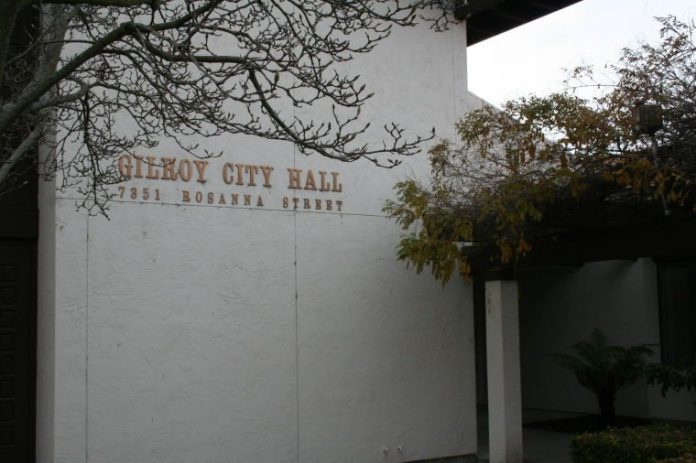The city of Gilroy is exploring where and how to shed light on a complex process that’s traditionally gone on behind closed doors: public employee contract negotiations.
The city’s all-citizen Open Government Commission, tasked with ensuring citizens are provided with greater access to information, is debating whether one California city’s approach should be adopted locally. In Costa Mesa, the city is required to publish every offer and counter-offer during negotiations on the city’s website and have an outside party analyze the fiscal impacts of each proposal.
“Our charge is to make sure that as much of what city business goes on is made public,” OGC Commissioner Jack Foley remarked at the Dec. 11 meeting. “That’s our charge.”
As it stands now in Gilroy, the city and its four labor groups—including police, fire, management and all other employees—reach agreement via an informal process that doesn’t involve outside negotiators and takes between 30 and 60 days.
“We’re not doing a big, formal exchange of proposals back and forth,” said City Human Resources Director LeeAnn McPhillips, who serves as the city’s negotiator. “We start the process off by having a conversation about where the city is at and where the labor organization is at and how we might be able to reach an agreement—quickly.
The negotiations themselves take place in closed session—behind closed doors after the city council votes to do so—and as the process draws to a close and an agreement is reached between the city and the labor group, the city posts a draft agreement on the city’s website 10 days before council consideration. City staff prepares a report that details the proposed changes to the contract, which is also made public.
The purpose of closed session isn’t necessarily to exclude the public—it’s to advance a strategy, City Administrator Tom Haglund said.
“(The council) avail themselves to closed session from time to time under a narrow list of circumstances in order to establish a strategy of the city so as not to telegraph that to the union, or if it’s a piece of litigation, to telegraph that to the plaintiff,” he added. “If you’re communicating to the public, you’re also communicating to the union. The unions don’t have to make their strategies public.”
But Costa Mesa is doing things differently, and Gilroy officials are taking note.
In 2012, the Costa Mesa City Council passed the Civic Openness in Negotiations ordinance, known as COIN, that requires an independent negotiator handle negotiations—instead of the traditional, executive-level public employee employed by the city. In Costa Mesa, an independent economic analyst is required to examine and publicly report on the fiscal impacts of proposals within a contract. After every offer or counter-offer comes in, the details of the proposal and their fiscal implications are made public.
“It makes me sad that we even have to have this,” Costa Mesa Mayor Pro Tem and creator of COIN, Stephen Mensinger told the Dispatch. “Ultimately, the unions know exactly what’s happening and the general public doesn’t. COIN simply tells you the magnitude of the problem and helps you manage the problem.”
Costa Mesa’s approach is one that challenges the traditional methods of handling public business, Foley remarked.
“There’s so much that goes on—and I don’t mean in this city, I mean in the history of the western world—under the table and just bad policy,” he added. “You see the results later on of the decisions that have been made that haven’t received tremendous scrutiny or were just passed along because it was easier to do. You end up with things like the pension system in this state.”
To increase transparency locally, Foley suggested the city put a brief description of each side’s proposal on the agenda of any council meeting where contract talks take place in closed session.
Filming the negotiations themselves could be a tool to pull back the curtain, but both the city and labor groups would need to reach agreement on the move.
“The city imposing a requirement that negotiations be televised would be an unfair labor practice (but) if both sides agreed to it, they absolutely could do it,” Haglund said.
“The city could request every single time there’s negotiations, because it believes in transparency and wants transparency, the union could either accept or refuse. Put them in the hot seat,” Foley added. “That’s part of what transparency can do; it can bring pressure to bear and make things happen more quickly, or not.”
“Or make things adversarial, just as you’re acknowledging,” added Haglund.
“Or contentious,” McPhillips said.
But figuring out where to draw the line when it comes to transparency isn’t a topic the group has tackled yet during its quarterly meetings at City Hall.
“The government runs and people are talking about all kinds of things all the time,” said Commissioner Janet Espersen. “Where do you draw the line between what’s reasonable to share and what’s appropriate to share?”
Moving forward, the commission will explore ways to open up the process and ultimately make a recommendation to the city council.
But while transparency could keep the general public abreast of what’s going on in the negotiating room, it could also do harm, Haglund said, speaking broadly.
“We’ve worked very hard to establish good relationships with the unions—those honest relationships where we can have those hard discussions,” he said. “I think they’ve come to trust the information we provide them. I think in other communities—previously here—that wasn’t the case.”
Haglund added he has concerns about potentially doing damage to the city’s process if every offer or counter-offer is posted online for the public to view, for example. Though the OGC may have the best intentions in exploring transparency, he said, there should also be concern about inadvertently collapsing the process and straining the relationship between labor groups and city management.
“We’ve gotten to a good place here in Gilroy where we have fairly open and good labor relations with our units,” McPhillips added. “We don’t have a lot of grievances being filed. I couldn’t even tell you when the last one was even filed.”
Instead of a contentious atmosphere where even a minor violation of the MOU becomes a formal grievance handed in by a union rep, McPhillips said Gilroy’s labor groups see the grievance process as a “last resort” and will approach department heads with their concerns first. To McPhillips, that indicates Gilroy’s current labor climate is in a good place.
But some members of the Open Government Commission are cautious that labor relations may change, especially given the fact that budgets statewide—even in Gilroy—are tight.
Mensinger, who said he’s had dozens of calls from other California cities interested in exploring their own version of COIN, is happy that it’s not a partisan issue anymore.
“The reform is going to have to come from all of us and we have to keep saying to ourselves if we don’t want to pass this debt on to the next 10 generations, we have to understand what we have and negotiate better contracts moving forward transparently,” he added. “We also have to look at making cuts in these pension vehicles—which are unsustainable.”














